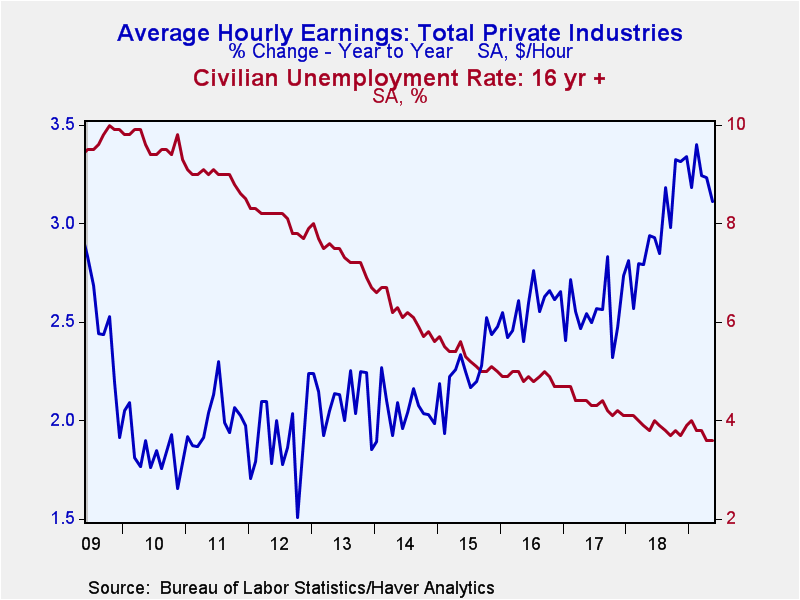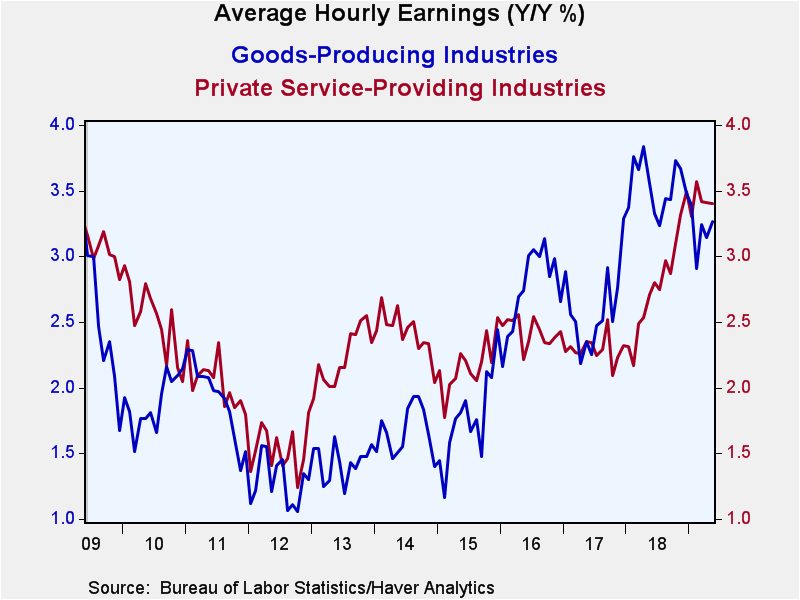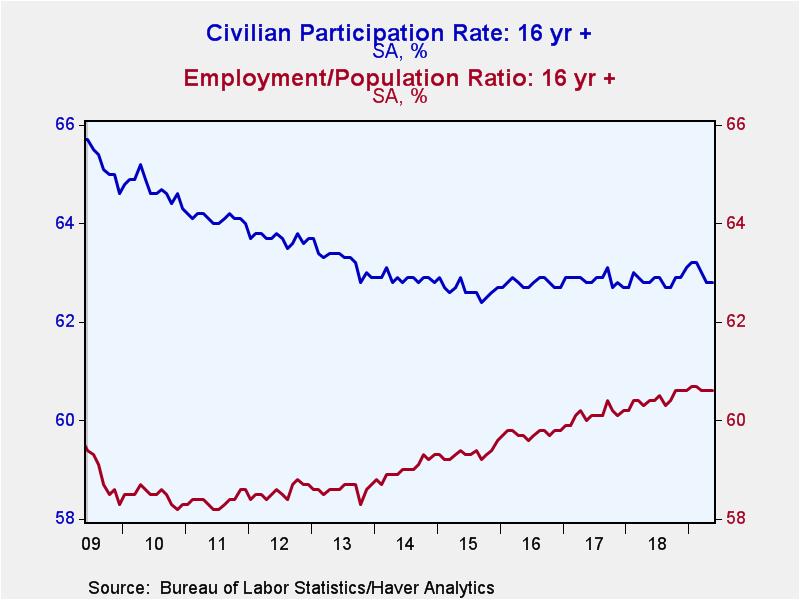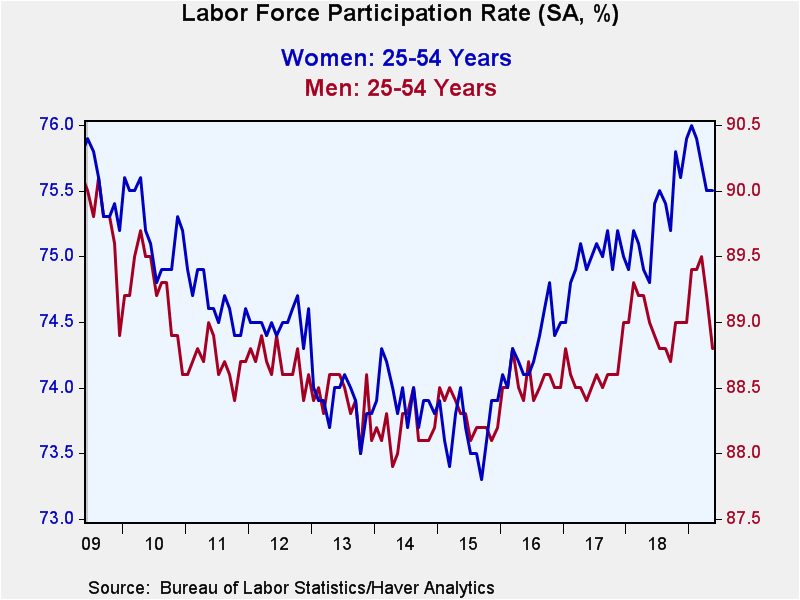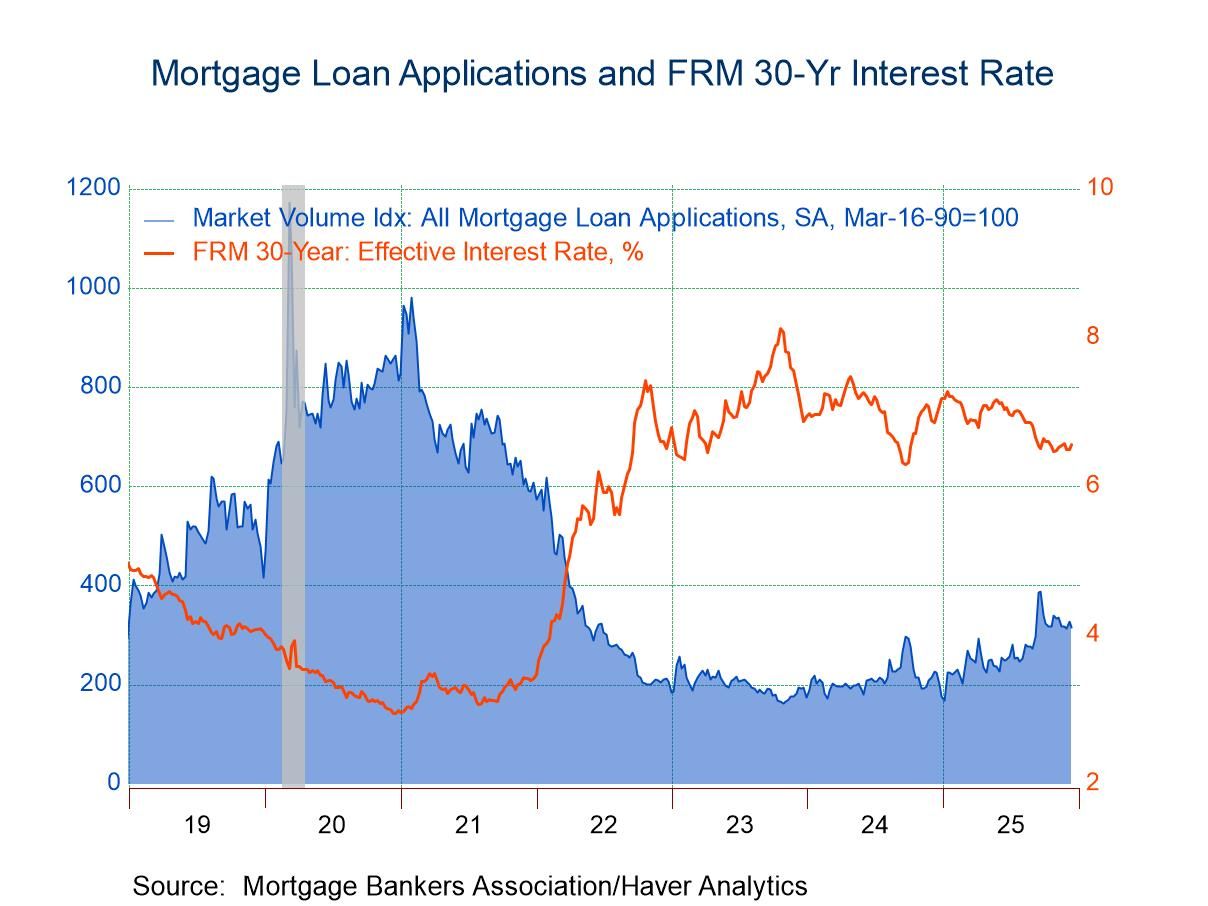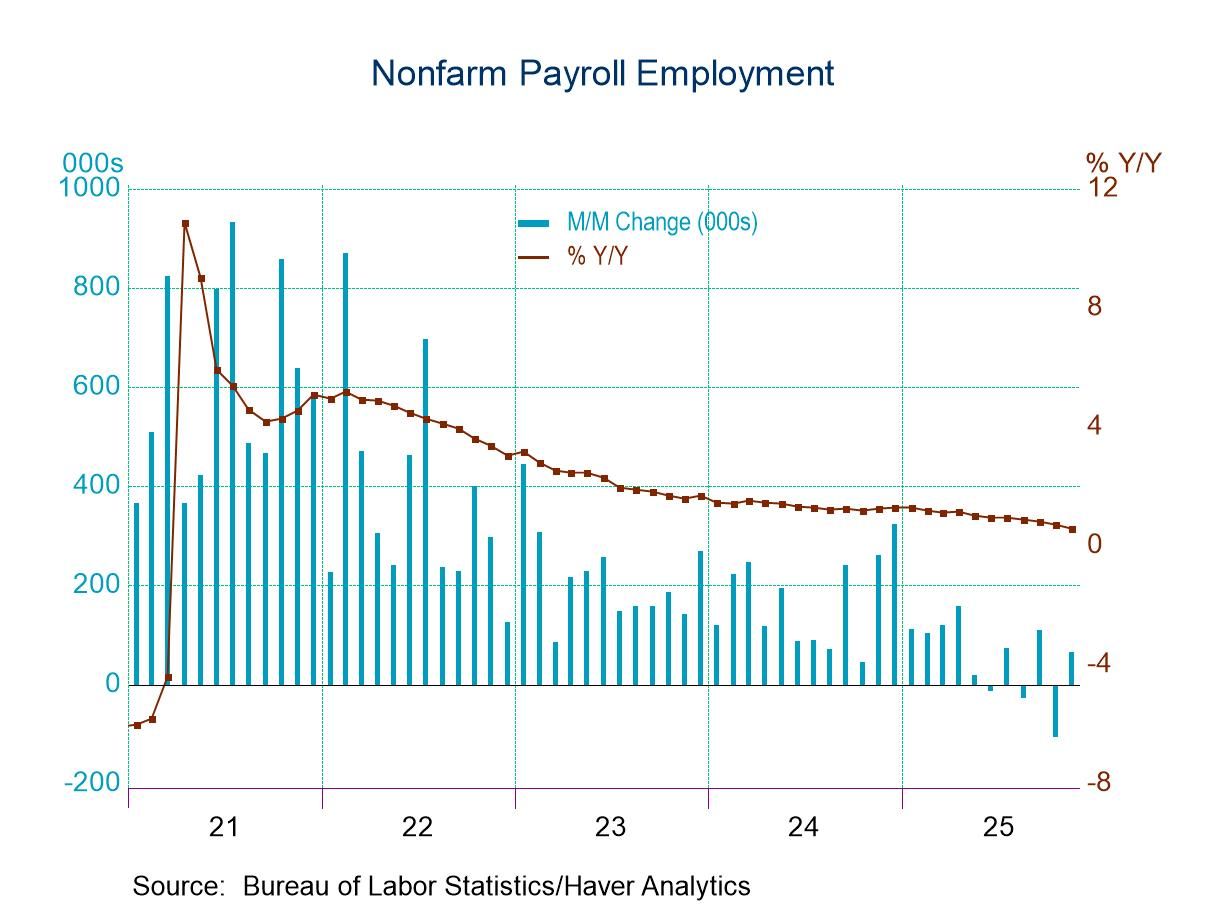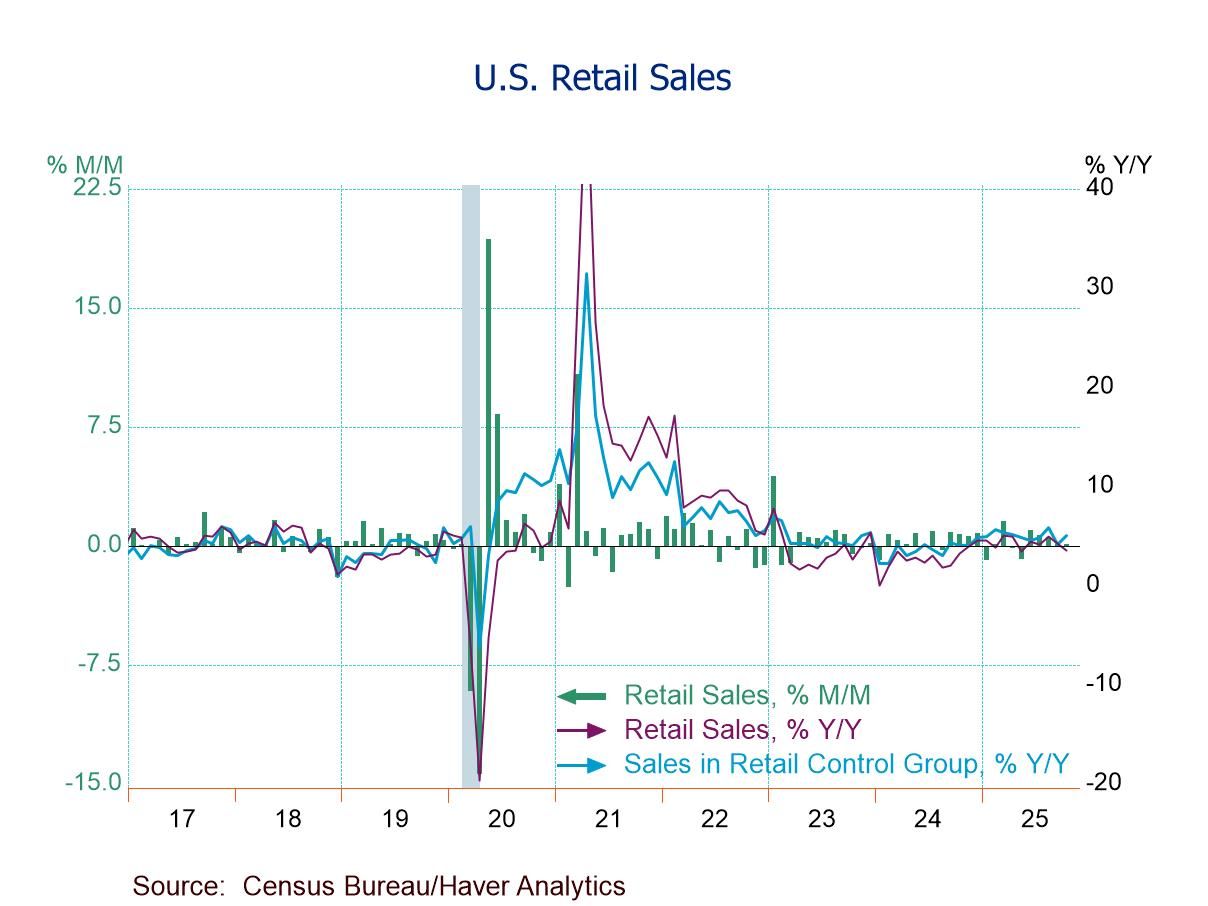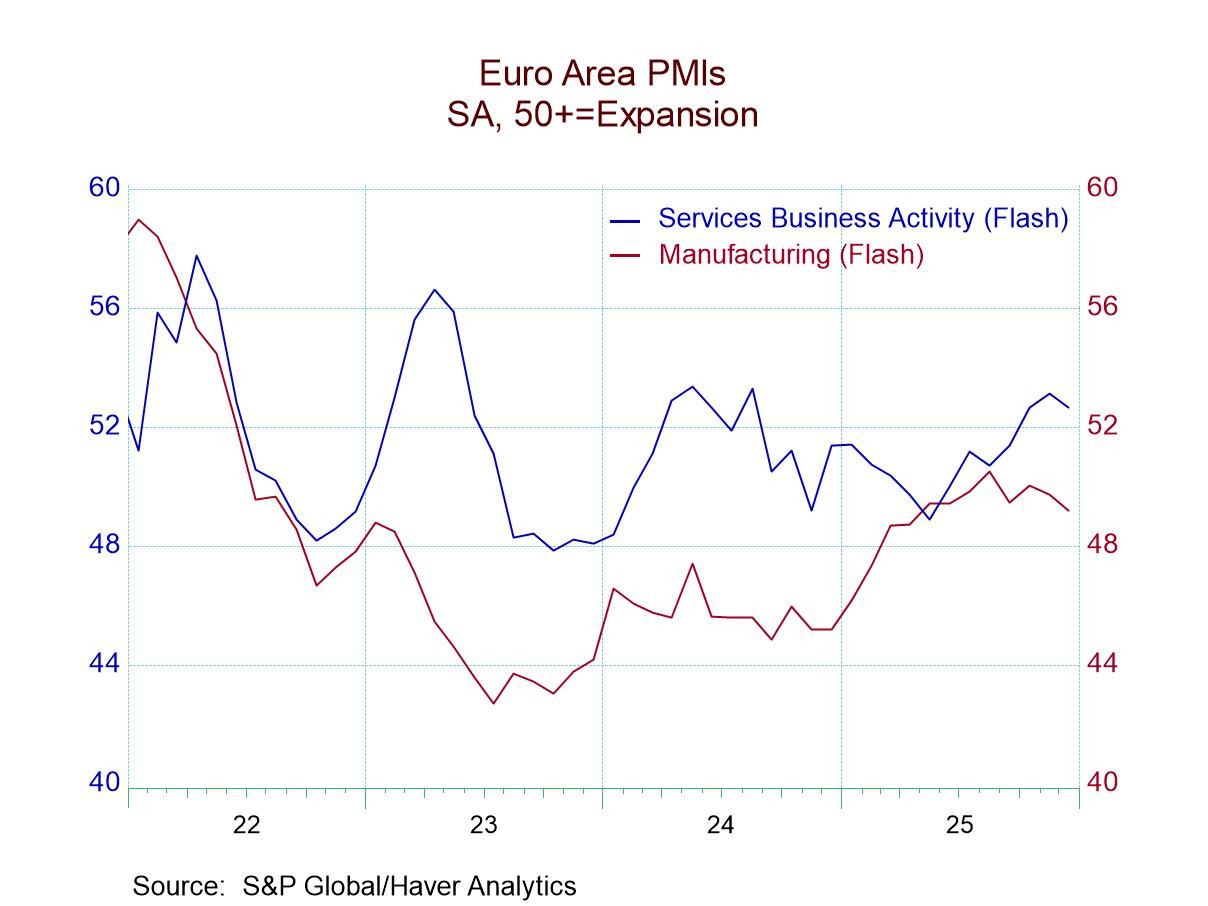 Global| Jun 07 2019
Global| Jun 07 2019U.S. Payroll Growth Slows Significantly; Wage Gain Eases Y/Y
by:Tom Moeller
|in:Economy in Brief
Summary
The labor market weakened during May. Nonfarm payrolls increased 75,000 (1.5% y/y) following a 224,000 April rise, revised from 263,000. The March increase also was revised lower to 153,000 from 189,000. The May rise in payrolls fell [...]
The labor market weakened during May. Nonfarm payrolls increased 75,000 (1.5% y/y) following a 224,000 April rise, revised from 263,000. The March increase also was revised lower to 153,000 from 189,000. The May rise in payrolls fell short of expectations for a 189,000 gain in the Action Economics Forecast Survey. Average hourly earnings in the private sector increased 0.2% for the third straight month and missed expectations for a 0.3% rise. The April improvement was unrevised. Growth during the last twelve months dropped to 3.1%.
The unemployment rate held steady at an expected 3.6% and equaled the lowest rate since December 1969. Employment in the household survey rose 113,000 and the labor force increased 176,000. The overall jobless rate, including those who were marginally attached or working part-time for economic reasons, fell to 7.1%, the lowest level since December 2000.
From the payroll employment survey, the overall increase of 75,000 was held back by broad-based weakening amongst sectors. The number of construction jobs rose 4,000 following double-digit increases in the prior two months. Factory sector employment edged 3,000 higher following a 5,000 gain. Employment in the mining & logging sectors inched just 1,000 higher, with y/y growth falling to 4.0%, half last year's growth.
Private service sector jobs increased 82,000 (1.7% y/y) following gains of 170,000 and 140,000 in the prior two months. The number of professional & business services jobs rose a firm 33,000 (2.3% y/y), but was roughly half the prior month's increase The number of temporary help jobs gained 5,100 (0.9% y/y) on the heels of a 9,900 gain. Education & health services employment increased 27,000 (2.5% y/y) after a 73,000 gain. Financial activities employment rose 2,000 (1.1% y/y) following a 13,000 rise. Employment in the trade, transportation & utilities sector was unchanged (0.5% y/y) after edging 1,000 higher. This figure was held back by a 7,600 decline (-0.7% y/y) in retail sector jobs which was the fourth monthly decline this year. Information sector jobs moved lower by 5,000 (-1.6% y/y) after a 10,000 decrease. It also was the fourth monthly decline this year following minimal growth in 2018 and 2017. Improvement in employment growth was evident in the leisure & hospitality sector where jobs rose 26,000 (2.5% y/y) following a 17,000 increase.
Public sector employment declined 15,000 reflecting a 10,000 cutback (-0.1% y/y) in the number of state government jobs, the third consecutive monthly decline. Local government employment eased 9,000 (+0.5% y/y) after a 17,000 increase. Federal government jobs rose 4,000 (0.9% y/y), half the prior month's gain.
The 0.2% increase in average hourly earnings reflected a 0.3% rise in factory sector earnings which raised y/y growth to 2.2%, its best since late 2017. Construction sector pay also improved 0.3%, but the 2.2% rise is half what it was as of the end of last year. Private service sector earnings rose 0.2% and the 3.2% y/y rise is below the peak 3.6% gain last summer. Professional & business services earnings gained 0.5% (3.4% y/y) Information sector earnings also rose 0.5% (6.4% y/y). These gains where offset by a 0.1% decline (+3.6 y/y) in financial sector earnings and no change in leisure & hospitality (3.0% y/y) pay.
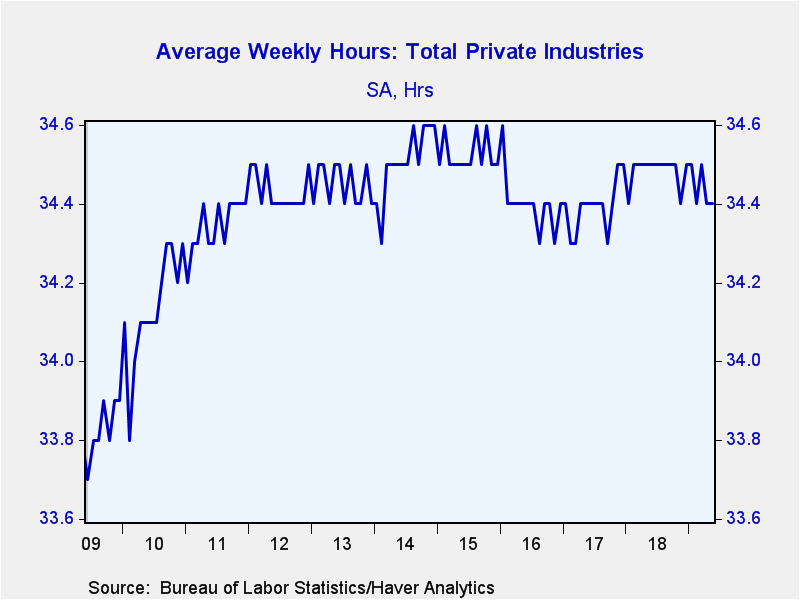 The length of the length of the average workweek was stable m/m
at 34.4 hours. Mining & logging sector hours slipped to 46.3
and factory sector hours held steady at 40.6% hours. Construction sector hours
also were unchanged m/m at 39. 1 hours. Each of these figures is below the
earlier high. The length of the private service sector workweek held steady at
33.3 hours, where it's been since last July. The workweek in financial
activities eased to 37.6 hours as did financial activities hours. Information
services hours rose to 36.4, up from the early-2018 low of 35.8 hours. Trade,
transportation & utilities hours fell to 34.2 hours, down sharply versus the
late-2017 peak. Leisure & hospitality workweek fell sharply to 25.9 hours,
and has been trending lower since the end of 2015.
The length of the length of the average workweek was stable m/m
at 34.4 hours. Mining & logging sector hours slipped to 46.3
and factory sector hours held steady at 40.6% hours. Construction sector hours
also were unchanged m/m at 39. 1 hours. Each of these figures is below the
earlier high. The length of the private service sector workweek held steady at
33.3 hours, where it's been since last July. The workweek in financial
activities eased to 37.6 hours as did financial activities hours. Information
services hours rose to 36.4, up from the early-2018 low of 35.8 hours. Trade,
transportation & utilities hours fell to 34.2 hours, down sharply versus the
late-2017 peak. Leisure & hospitality workweek fell sharply to 25.9 hours,
and has been trending lower since the end of 2015.
From the household employment survey, the stable 3.6% unemployment rate reflected a decline in the teenage jobless rate to 12.7% but a rise for those aged 20-24 to 7.0%. The unemployment rate for individuals between 25 and 54 years old fell to the 2000 low of 2.9%, but or those 55 and over it edged up to 2.7%. The labor force participation rate held steady at an average 32.8%, but for men aged 25-54 it fell to 88.8%, its lowest level since September. For women aged 25-54 years old it held steady m/m at 75.5%. The employment-to-population ratio held at 60.6%and remained up from the 2011 low of 58.2%. The number of people not in the labor force rose 0.5% y/y.
The labor market data are contained in Haver's USECON database. Detailed figures are in the EMPL and LABOR databases. The expectations figures are in the AS1REPNA database.
Has U.S. Monetary Policy Gone Off Track? from the Federal Reserve Bank of Dallas is available here.
| Employment: (SA, M/M Change, 000s) | May | Apr | Mar | May Y/Y | 2018 | 2017 | 2016 |
|---|---|---|---|---|---|---|---|
| Payroll Employment | 75 | 224 | 153 | 1.5% | 1.7% | 1.6% | 1.8% |
| Previous Estimate | -- | 263 | 189 | -- | -- | -- | -- |
| Manufacturing | 3 | 5 | -3 | 1.5 | 2.0 | 0.7 | 0.1 |
| Construction | 4 | 30 | 15 | 2.8 | 4.6 | 3.6 | 4.1 |
| Private Service-Producing | 82 | 170 | 140 | 1.7 | 1.7 | 1.8 | 2.2 |
| Government | -15 | 19 | 0 | 0.4 | 0.4 | 0.6 | 0.9 |
| Average Weekly Hours - Private Sector | 34.4 | 34.4 | 34.5 | 34.5 | 34.5 | 34.4 | 34.4 |
| Private Sector Average Hourly Earnings (%) | 0.2 | 0.2 | 0.2 | 3.1 | 3.0 | 2.6 | 2.6 |
| Unemployment Rate (%) | 3.6 | 3.6 | 3.8 | 3.8 | 3.9 | 4.4 | 4.9 |
Tom Moeller
AuthorMore in Author Profile »Prior to joining Haver Analytics in 2000, Mr. Moeller worked as the Economist at Chancellor Capital Management from 1985 to 1999. There, he developed comprehensive economic forecasts and interpreted economic data for equity and fixed income portfolio managers. Also at Chancellor, Mr. Moeller worked as an equity analyst and was responsible for researching and rating companies in the economically sensitive automobile and housing industries for investment in Chancellor’s equity portfolio. Prior to joining Chancellor, Mr. Moeller was an Economist at Citibank from 1979 to 1984. He also analyzed pricing behavior in the metals industry for the Council on Wage and Price Stability in Washington, D.C. In 1999, Mr. Moeller received the award for most accurate forecast from the Forecasters' Club of New York. From 1990 to 1992 he was President of the New York Association for Business Economists. Mr. Moeller earned an M.B.A. in Finance from Fordham University, where he graduated in 1987. He holds a Bachelor of Arts in Economics from George Washington University.



